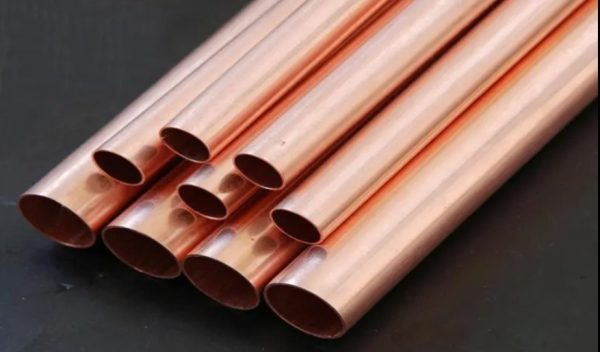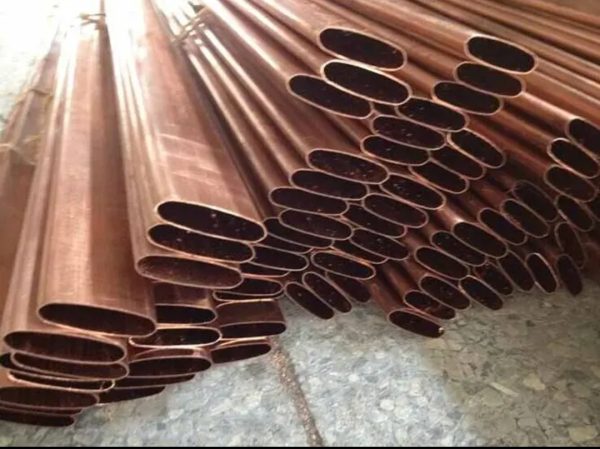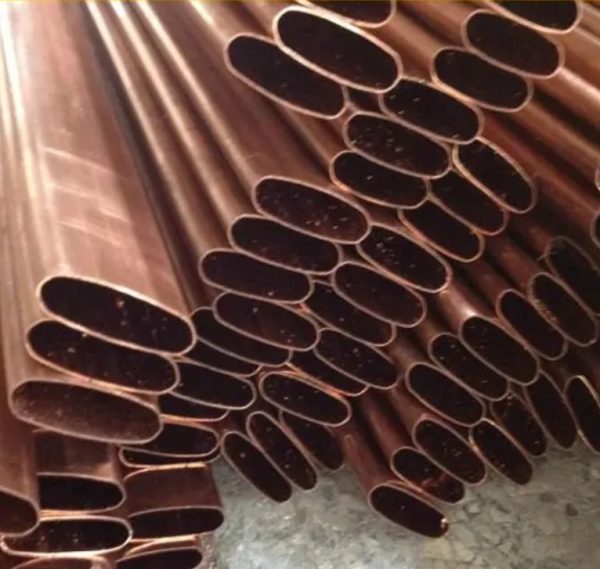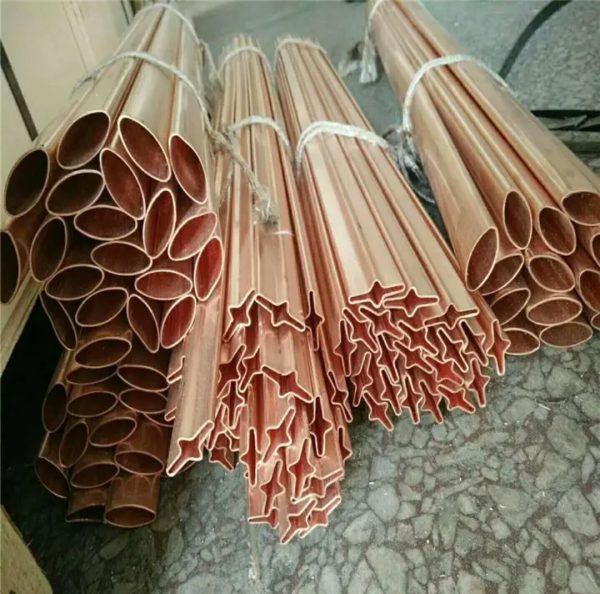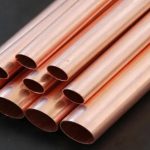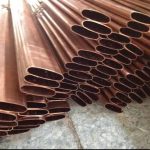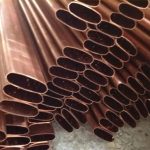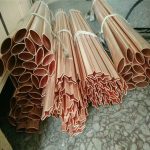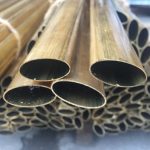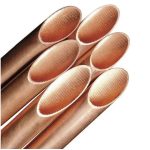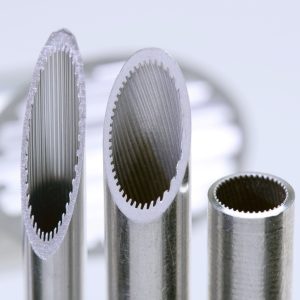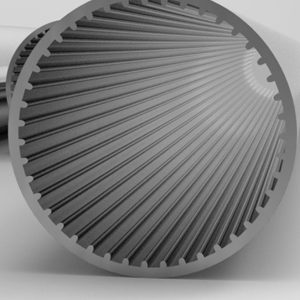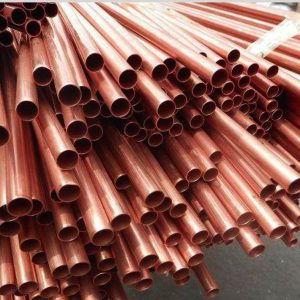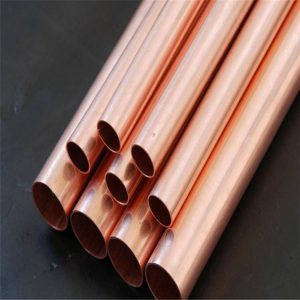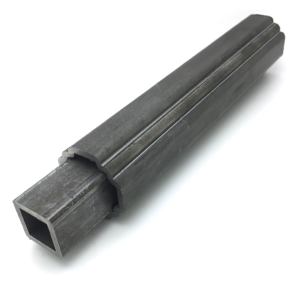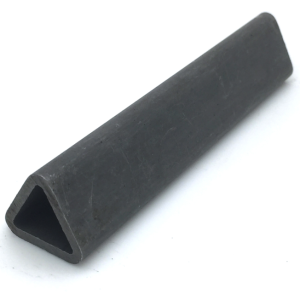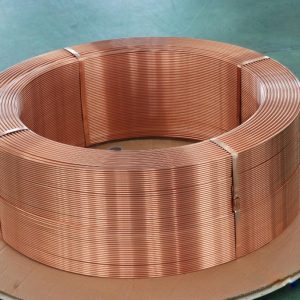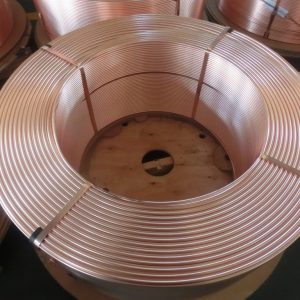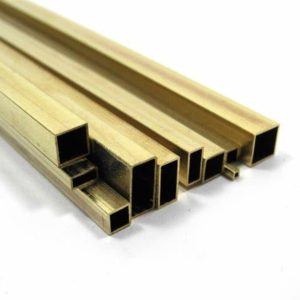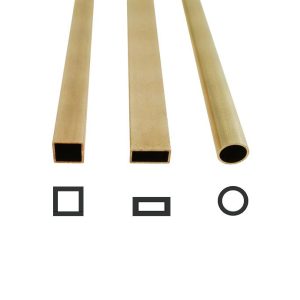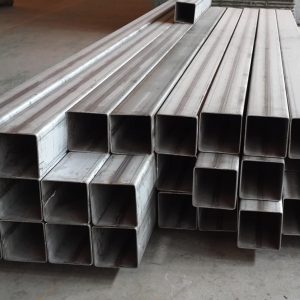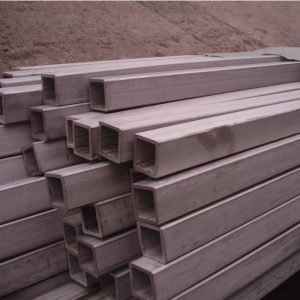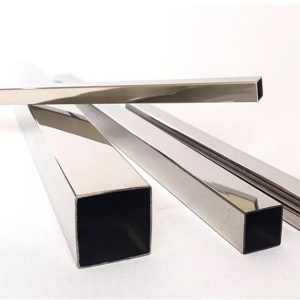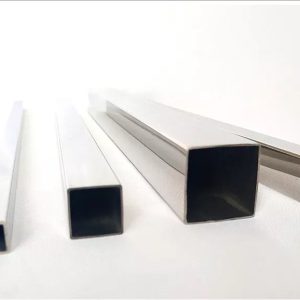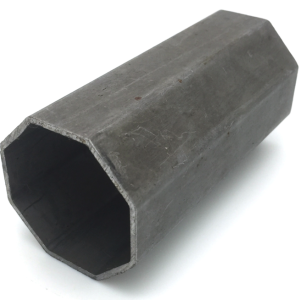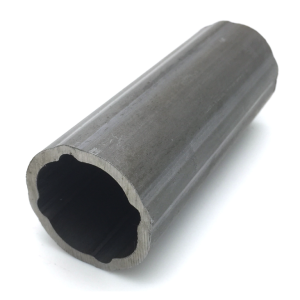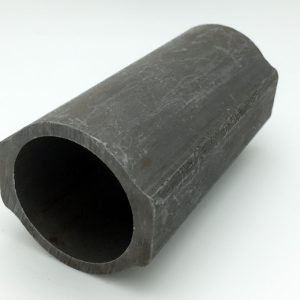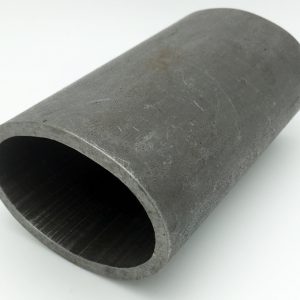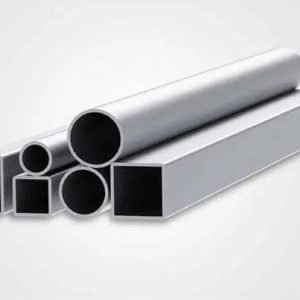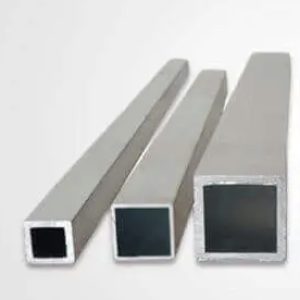Copper Oval Tube
Copper tubes are also called copper tubes. The utility model relates to a non-ferrous metal pipe, which is a pressed and drawn seamless pipe. Copper pipe has the characteristics of good conductivity and thermal conductivity. It is the main material of conductive fittings and heat dissipation fittings for electronic products, and has become the first choice for modern contractors to install water pipes, heating and cooling pipes in all residential commercial buildings. Copper tubes have strong corrosion resistance, are not easy to be oxidized and react with some liquid substances, so they are easy to be bent and formed.
About 75% of copper tubes in China are used in the refrigeration industry. Because of its excellent flexibility, thermal conductivity and corrosion resistance, copper pipes are widely used in the evaporator, condenser, connecting pipes, pipes and pipe fittings of air conditioners, refrigerators and freezers, among which air conditioners are the main downstream. In 2021, the output of air conditioners, household refrigerators and freezers will increase significantly. In the first half of the year, the output will be 15.85 million units, 44.35 million units and 15.85 million units, respectively, 21%, 19% and 42%. The increase of refrigeration output will drive the demand for copper tubes for refrigeration.
In offshore engineering, copper alloy condenser tubes have excellent electrical conductivity, thermal conductivity, corrosion resistance and other properties., It has broad application prospects. At the press conference in June 2021, the National Development and Reform Commission said that 123 desalination projects have been completed in China, with a total capacity of 1.65 million tons/day. The Action Plan for the Development of Seawater Desalination and Utilization proposes that by 2025, the total scale of seawater desalination in China will reach more than 2.9 million tons/day, and the new scale of seawater desalination will reach more than 1.25 million tons/day, so there is a great demand for copper tubes of heat exchange condensers.
- Description
- Inquiry
Description
Oval Copper Tube
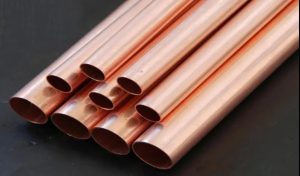
Copper has a single, “alpha” phase structure even up to relatively large percentage additions of secondary elements. However copper in the engineering sense is generally regarded as those alloys having less than 0.5% of any additional elements.
Thermal conductivity – better than gold or aluminium, copper excels in transferring heat. In short, drawn copper engineering tubing is used in engineering applications where a combination of properties are required:
- Electrical conductivity – and electric currents.
- Malleability – copper, especially phosphorous deoxidised copper (Cu-DHP) retains a combination of ductility and strength that has allowed it to be used for metal fabrication since before the bronze age. Because it work hardens, it can retain its formed shape after easy manipulation.
- Strength – in the hard condition copper has a tensile strength of about 385 MPa.
| Copper | 99.90 | C101 Cu-ETP | UNS C11000 | Electrolytic Tough Pitch, HC |
|---|---|---|---|---|
| 99.95 | (C103) Cu-OF | UNS C10200 | OFHC | |
| 99.85 | C106 Cu-DHP | UNS C12200 | Phosphorus Deoxidised | |
| 99.99 | (C110) SE-Cu/Cu-OFE | – | Special Electronic |
Some characteristics of drawn copper tube:
Thermal and electrical properties
Like aluminium, copper has been used in the electrical industry for many years because it offers good electrical conductivity (about 150% that of aluminium). The purer the grade, the higher the conductivity: Cu-ETP and Cu-OFE are high purity grades, widely used for electronic and electrical applications.
Copper also has good thermal conductivity at about six times that of steel. As long as other requirements are satisfied (corrosion resistance, strength and electrical characteristics) copper may be a perfect choice of material.
Corrosion resistance & coatings
Copper is termed a “noble” metal as it resists corrosion in a wide variety of media.
Plating can be used to enhance the appearance, electrical performance or corrosion resistance of copper but can also cause problems if a galvanic cell is set up between plating and the copper substrate; specialist advice should always be taken.
Strong but malleable
Copper grades attain about 385 MPa when fully hard and over 200 MPa in the soft condition. Unlike steel, copper and its alloys become stronger at low temperatures and do not suffer the ductile/brittle transition of steel.
Copper tube is widely used to fabricate complex components where the combined properties of strength and ductility are required. Typical applications include gas and oil boilers, refrigeration and air conditioning plant. Copper is also pre-eminent in the field of household water systems.
Drawn Copper Tube
Drawn Copper Tube and alloys have been designed to match capabilities to needs and are amongst the oldest materials in the service of man.
Even small additions of a second element can significantly effect a property.
The alloying elements employed to alter the characteristics of pure copper used for copper alloy engineering tubing impart differing characteristics, often in combination: strength, temperature capabilities, machining properties or corrosion resistance. They all retain to some degree basic properties of copper: ductility, thermal and electrical conductivity.
All the alloys are fairly strong: high strength alloys can be treated to achieve well over 500 MPa (aluminium brass reaches 550 and phosphor bronze over 650 MPa).
China is a major producer and consumer of copper in the world. As a very common and important metal, copper is widely used in various industries. From the perspective of the proportion of the output of copper products processed in China, the output of copper tubes will be 2.14 million tons in 2021, accounting for 10.75% of the total output of copper products.
In recent two years, affected by the epidemic, the international copper price fell, leading to a sharp drop in China’s copper price. In 2020, the output of copper tubes will be 2.05 million tons, with a slight increase of 2.14 million tons in 2021.
From the perspective of the regional distribution of global copper pipe demand, China is the region with the largest demand for copper pipes in the world. In 2019, China’s copper pipe demand accounted for 54.1%, followed by Europe, North America, Japan, South Korea and other regions. The import and export data of copper pipes in China from 2017 to 2021 show that the export quantity and amount of copper pipes are always higher than the import quantity and amount. China is a big exporter of copper tubes. In 2021, China’s copper pipe export volume will be 230800 tons, 207200 tons more than the import volume. In 2021, China’s copper pipe export volume will be 14.702 billion yuan, 13.011 billion yuan higher than the import volume. From 2017 to 2021, the quantity and amount of China’s copper pipe imports remained stable, with small fluctuations. Affected by the epidemic in 2020, the number and amount of copper tube exports decreased slightly, but recovered again in 2021, and the overall copper tube exports showed an upward trend.
In 2021, Thailand will be the country with the largest export and import of copper pipes in China. In 2021, China will import 706 million yuan of copper tubes from Thailand, twice as much as Japan. In 2021, China will import 302 million yuan of copper tubes from Japan. In 2021, Shanghai will be the city with the largest demand for copper pipe imports, with an import amount of 796 million yuan. The second is Zhejiang Province and Guangdong Province, which are 309 million yuan and 292 million yuan respectively. The electronics, automobile and other industries in these regions are well developed, and there is a large demand for copper.
Copper tube has good conductivity and is the main material of conductive accessories and heat dissipation accessories of electronic products. Copper tubes have strong corrosion resistance, are not easy to oxidize and react with some liquid substances. It is the first choice for modern contractors to install water pipes, heating and cooling pipes of all residential commercial houses.
Copper tubes are also called copper tubes. The utility model relates to a non-ferrous metal pipe, which is a pressed and drawn seamless pipe. Copper pipe has the characteristics of good conductivity and thermal conductivity. It is the main material of conductive fittings and heat dissipation fittings for electronic products, and has become the first choice for modern contractors to install water pipes, heating and cooling pipes in all residential commercial buildings. Copper tubes have strong corrosion resistance, are not easy to be oxidized and react with some liquid substances, so they are easy to be bent and formed.
About 75% of copper tubes in China are used in the refrigeration industry. Because of its excellent flexibility, thermal conductivity and corrosion resistance, copper pipes are widely used in the evaporator, condenser, connecting pipes, pipes and pipe fittings of air conditioners, refrigerators and freezers, among which air conditioners are the main downstream. In 2021, the output of air conditioners, household refrigerators and freezers will increase significantly. In the first half of the year, the output will be 15.85 million units, 44.35 million units and 15.85 million units, respectively, 21%, 19% and 42%. The increase of refrigeration output will drive the demand for copper tubes for refrigeration.
In offshore engineering, copper alloy condenser tubes have excellent electrical conductivity, thermal conductivity, corrosion resistance and other properties., It has broad application prospects. At the press conference in June 2021, the National Development and Reform Commission said that 123 desalination projects have been completed in China, with a total capacity of 1.65 million tons/day. The Action Plan for the Development of Seawater Desalination and Utilization proposes that by 2025, the total scale of seawater desalination in China will reach more than 2.9 million tons/day, and the new scale of seawater desalination will reach more than 1.25 million tons/day, so there is a great demand for copper tubes of heat exchange condensers.

